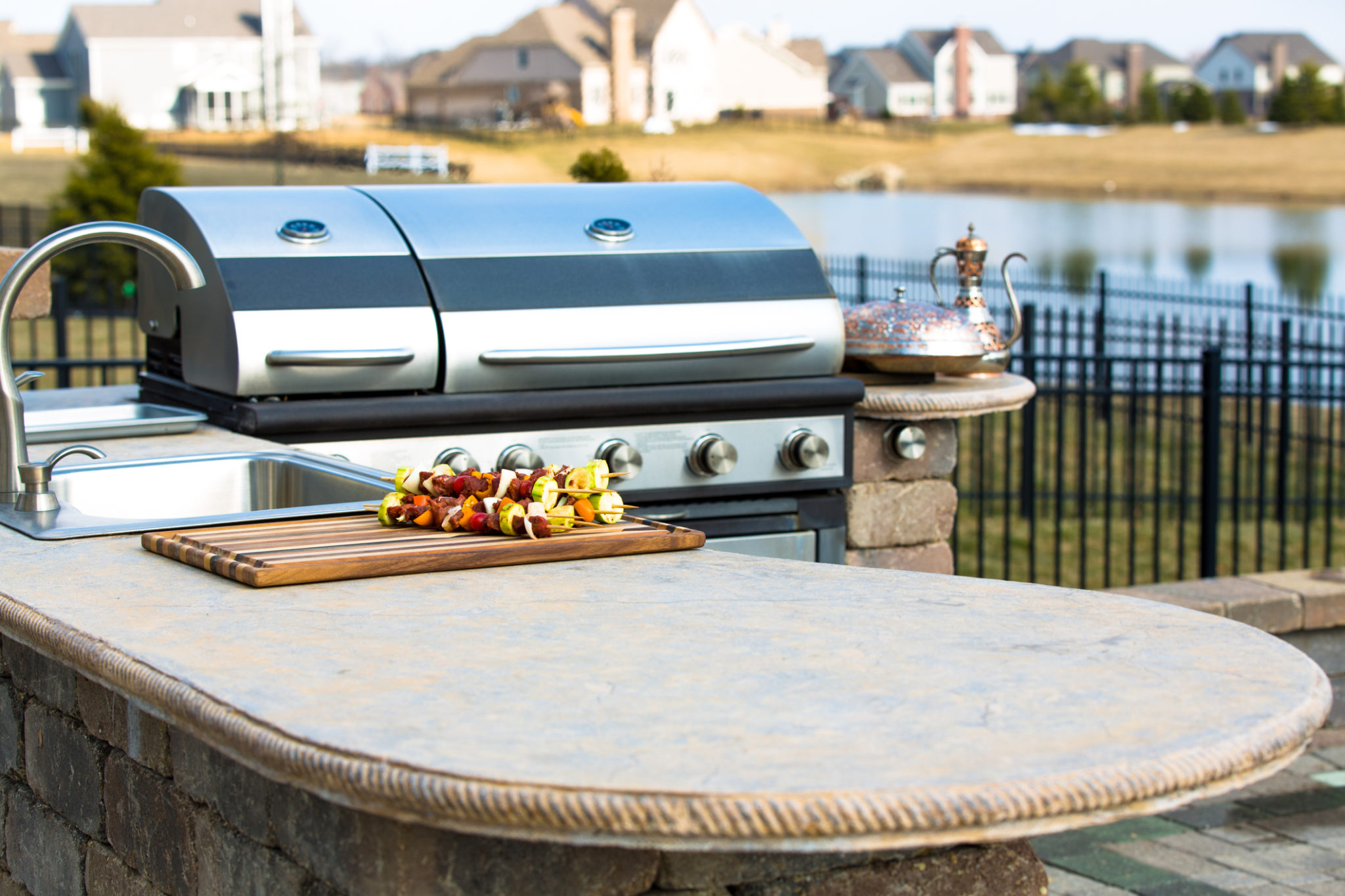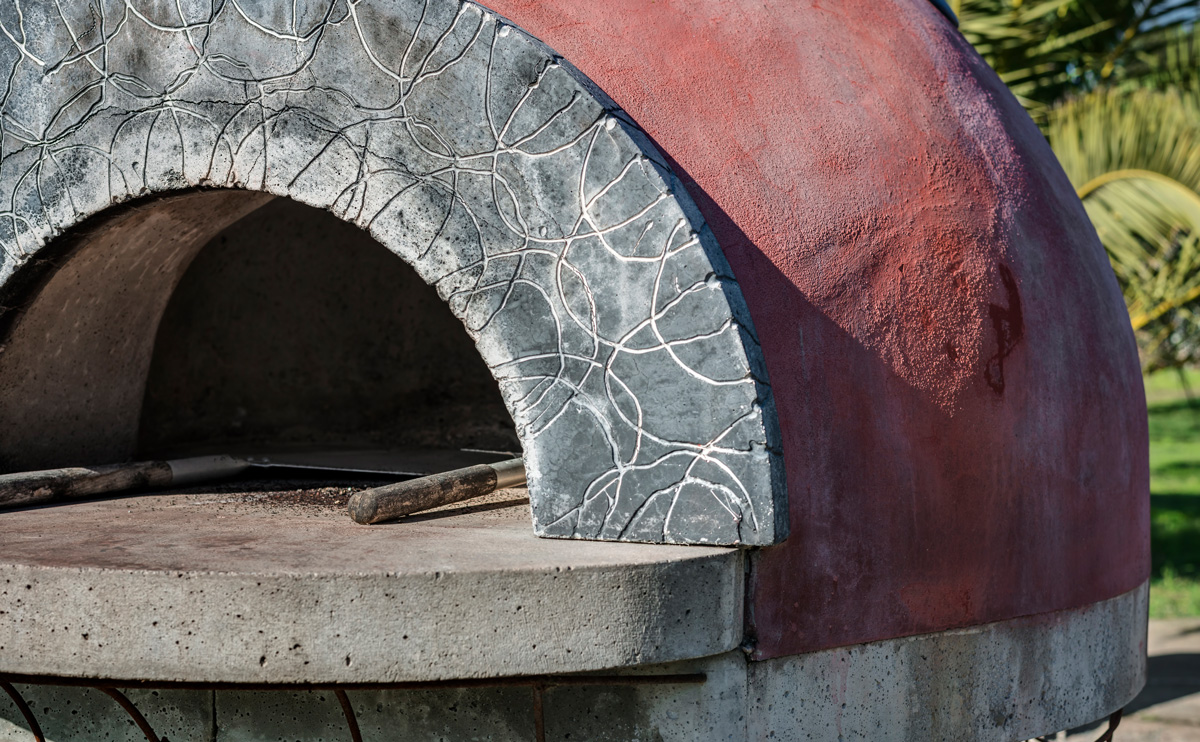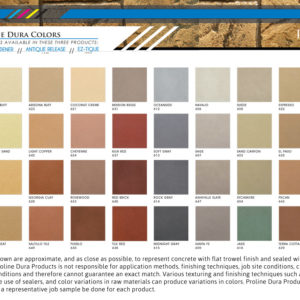Concrete is the Perfect Material to Create a Stunning Outdoor Kitchen
When you’re creating an outdoor kitchen, there’s a lot to contend with — high cooking temperatures, weather considerations, design options, and much more. Luckily, there’s one material that checks all the boxes: concrete! Read on to learn why concrete is a fantastic option for show-stopping outdoor kitchens.
Why should you install an outdoor kitchen?
In recent years, the concept of creating outdoor living areas has exploded in popularity. So much more than a simple porch, homeowners are increasingly looking to use their outdoor spaces for year-round entertaining, cooking, and simple enjoyment. This is where an outdoor kitchen comes into play, as it’s often seen as a focal point for the entire home. It can be used for casual cook-outs, fancy parties, neighborhood entertaining, and, of course, easy family meals.

Concrete outdoor kitchens are modern, durable, and customizable
Concrete is the best material to use in an outdoor kitchen, thanks to its impressive qualities. Outdoor kitchens need to hold up to high cooking temperatures, sun, snow, and more. Concrete is not only durable but it’ll last for decades with minimal maintenance.
Even better? Concrete provides a plethora of customization and flexibility. Concrete can be used throughout an outdoor kitchen, from the concrete floors to furniture to countertops to sinks! Let’s take a look at these elements in more detail:
Concrete patios:
A concrete patio can last 30 years if properly poured, sealed, and maintained. That’s a long life! By applying a sealer once every two years and giving it a good scrub every year, your concrete patio will look fantastic for years.
Concrete furniture:
It sounds surprising but concrete furniture is a great option for outdoor use. Majorly durable, this furniture is also perfect for those with allergies, as concrete doesn’t have issues with dust mites or mildew.
Concrete sinks:
Concrete is an excellent choice when you need unconventional dimensions for your sink or you want it integrated with the counter. In an outdoor kitchen, a small bar sink is a useful feature for your guests.
Concrete countertops:
We saved our favorite for last! Concrete countertops are incredible and can match any design due to the stamps and tinting options available (more on this below). They can be a work of art if the surface is polished or embedded with materials like glass. Easily cast trivets or cutting boards into the counter to further enhance its functionality. Since concrete is so strong, countertops can have overhangs or seamless sections. Lightweight edge liners complete the look. Our selection of Proline products transfer texture to edges, corners, and risers. Both flexible and reusable, these liners are available in many natural textures.
Decorative concrete
Concrete’s decorative options are one of its top features. Stamps provide the look of materials such as brick, wood, stone, and tile, while tinting and coloring products create a beautifully cohesive look. When working with existing concrete, color packs for cementitious overlays or ProStain are great options. Proline Color Hardener and Integral color are perfect on new concrete. Accent the project using color products like Antique Powder Release, EZ-Tique Antiquing Wash, or acrylic stains.

-

Accent Water-Based Acrylic Stain
$10.00 – $46.00 Select options This product has multiple variants. The options may be chosen on the product page -

Accent Water-Based Acrylic Stain 4 Oz Sample Kit – All Colors
$150.00 Add to cart -

Antique Release – Concrete Colors 30 LB Pail
$83.75 Select options This product has multiple variants. The options may be chosen on the product page -

Color Hardener 60 LB Pail
$47.00 Select options This product has multiple variants. The options may be chosen on the product page
Design considerations
When planning an outdoor kitchen, you want to up the ante because a simple grill sitting on a concrete pad won’t wow the neighbors! Design to impress by incorporating these factors into the plan.
1. Protection from the elements:
Think about sun, shade, rain, show, and wind. You’ll want an outdoor kitchen to be adequately protected from undesirable weather. Make sure the area will be comfortable not only during the summer, but during the off-season too. Incorporate awnings, trellises, and built-in umbrellas so homeowners can use the kitchen when it’s hot, raining, and maybe even snowing. Don’t forget to take advantage of natural shade provided by trees and vines to help cool off. Lastly, take the wind into account when deciding where the grill will go so smoke won’t blow into your dining area or into the neighbor’s windows.
2. Size:
To ensure the area is used often, it has to meet the needs of the homeowners and accommodate their most typical gatherings. Ask about the entertaining needs of the family, such as how many people they might entertain, how big their families are, what kind of parties they host, and if they commonly use caterers.
3. Location:
When situating the kitchen, ensure it’s placed in the best location. Take natural shade into account (see above!), as well as proximity to the inside kitchen for max convenience. Consider the importance of accessibility, like minimizing steps or including ramps.
4. Equipment:
Don’t settle for just a grill in an outdoor kitchen. Take into account the wide variety of options available, including outdoor refrigerators, bar sinks, side burners, and built-in storage. (We love pizza ovens, too!)
Ready to get started?
Contact our friendly experts today at 800-221-9469 if you need assistance. We’re here to answer your project and product questions! If you’re ready to get started on an outdoor kitchen, start shopping our selection of Proline concrete stamps. To learn more, read Tips to Create the Perfect Outdoor Living Space and Four Trends for Outdoor Kitchens.
Categories: Concrete Stamps, Concrete Trends, Decorative Concrete, Uncategorized
